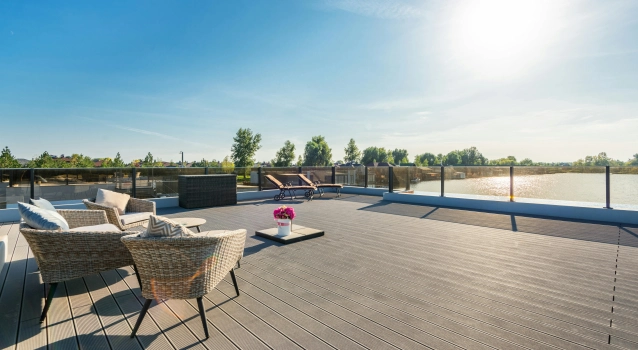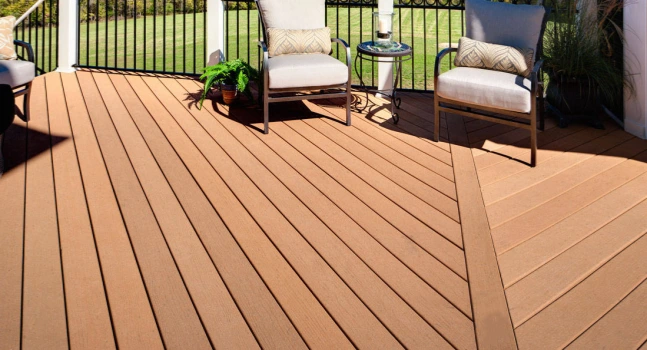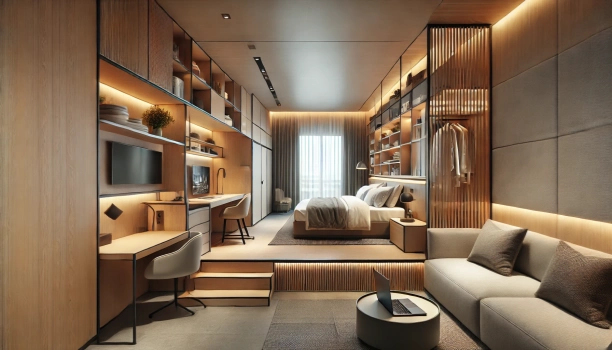How To Choose High Quality WPC Wall Panels?
In the realm of modern construction, Wood Plastic Composite (WPC) wall panels are a standout choice for their blend of durability, low maintenance, and aesthetic versatility. But, faced with an array of options, selecting the highest quality WPC wall panels can be daunting. This guide provides crucial insights to help you navigate the selection process with confidence.
What Is WPC Material?
WPC, a blend of wood fibers and recycled plastics, offers a sustainable alternative to traditional building materials. Its unique composition provides resistance against decay, moisture, and pests, making it ideal for both indoor and outdoor applications.
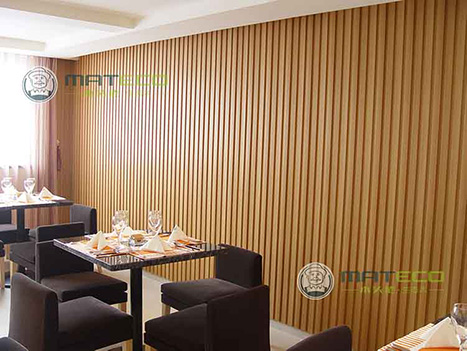
1. Material Composition and Quality
The quality of WPC panels hinges on the wood-to-plastic ratio. A balanced mix ensures structural integrity and aesthetic appeal. Panels with a higher wood content offer a more natural look but may require additional maintenance, while those with more plastic are more durable and weather-resistant.
Most of the WPC wall panels on the market have the following composition ratio: 30% HDPE + 60% wood fiber + 10% chemical additives. Due to MATECO’s better production technology, the ratio of the wall panels we produce is relatively different, 60% PVC + 30% wood fiber + 10% chemical additives. What is the difference between these two component proportions of wall panels?
Let's analyze the two WPC wall panel compositions based on their component ratios:
1) 30% HDPE + 60% Wood Fiber + 10% Chemical Additives
Structural Integrity and Durability: This composition, with a higher percentage of wood fiber (60%), is likely to have a more natural wood-like appearance and texture. The presence of 30% HDPE (High-Density Polyethylene) contributes to the panel’s durability but to a lesser extent compared to a higher plastic content. The structural integrity is generally good, but the high wood content might make it slightly more susceptible to issues that affect wood, such as moisture absorption and expansion.
Maintenance Requirements: Given the higher wood content, these panels may require more maintenance than those with a higher plastic content. They might need treatments or sealants to maintain their appearance and to protect against moisture or UV damage.
Eco-friendly if the wood is sourced sustainably. However, the long-term environmental impact also depends on the maintenance and longevity of the panels.
2) 60% PVC + 30% Wood Fiber + 10% Chemical Additives
Structural Integrity and Durability: This composition, with a dominant 60% PVC (Polyvinyl Chloride) content, is likely to be more durable and weather-resistant than the first. PVC is known for its strength, stability, and resistance to moisture and decay. This makes the panels more robust against environmental factors, reducing the likelihood of warping or rotting.
Maintenance Requirements: Panels with a higher plastic content are generally low-maintenance. They are less prone to damage from moisture and insects and often require only basic cleaning. This makes them a practical choice for areas exposed to harsh weather conditions or where minimal upkeep is desired.
2. Assessing Density and Strength
Density is a critical indicator of quality in WPC panels. Higher density materials are less prone to damage and wear over time. When choosing panels, consider the demands of the installation environment and opt for higher density options for areas with high foot traffic or exposure to the elements.
How to calculate density: https://www.matecowpc.com/news/How-To-Calculate-The-Density-of-A-WPC-Panelling.html
3. Aesthetics: Surface Finish and Appearance
WPC panels come in various textures and colors. When selecting, consider UV-resistant options to prevent fading. The finish should be consistent and free of defects to ensure a visually pleasing installation.
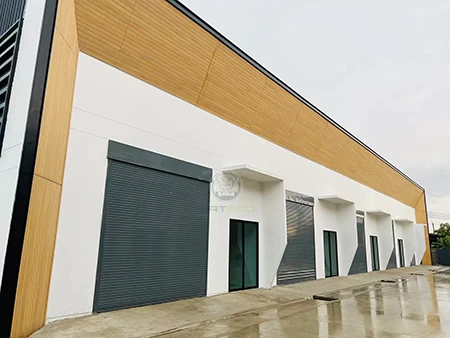
4. Water and Thermal Resistance
For outdoor applications, water resistance is paramount. High-quality WPC panels are engineered to withstand moisture, preventing mold, mildew, and rot. Additionally, consider the thermal expansion coefficient of the WPC to ensure stability in varying temperatures.
5. Easy and Efficient Installation
The installation system of WPC panels can vary significantly. Choose panels with a user-friendly system to ensure a smooth installation process and a secure, long-lasting fit.
6. Manufacturer Reputation and Warranty
Reputable manufacturers often offer warranties on their WPC panels, a testament to the quality and durability of their products. Research manufacturers and read reviews to gauge their standing in the market.
MATECO WPC manufacturer offer a 10-year non-fading guarantee for outdoor products and a 20-year guarantee for indoor products.
7. Certifications and Compliance
Certifications can validate the quality of WPC panels. Look for panels that meet industry standards for safety, environmental impact, and performance.
MATECO WPC manufacturer hold various certificates and licenses to meet the import requirements of different countries.
8. Balancing Price and Quality
While budget is an important consideration, the cheapest options may not provide the best value in the long run. Investing in higher quality panels can lead to lower maintenance costs and greater longevity.
Conclusion
Selecting high-quality WPC wall panels is essential for ensuring not just aesthetic appeal but also long-term durability and performance. By taking into account material composition, density, aesthetics, resistance properties, and manufacturer reputation, you can make an informed choice that meets both your practical needs and design aspirations.
If you are looking for a WPC manufacturer, MATECO will be your best choice.
Website: https://www.matecowpc.com
WhatsApp: +86-13380085620
Email: info@matecowpc.com




